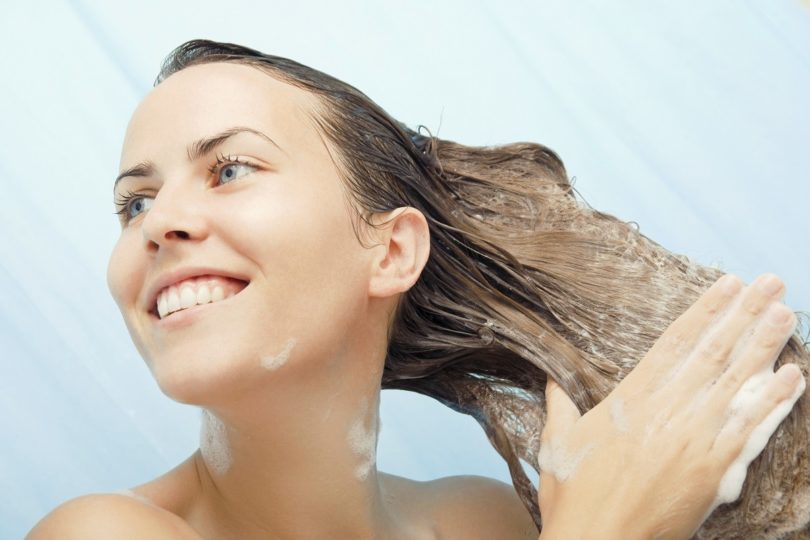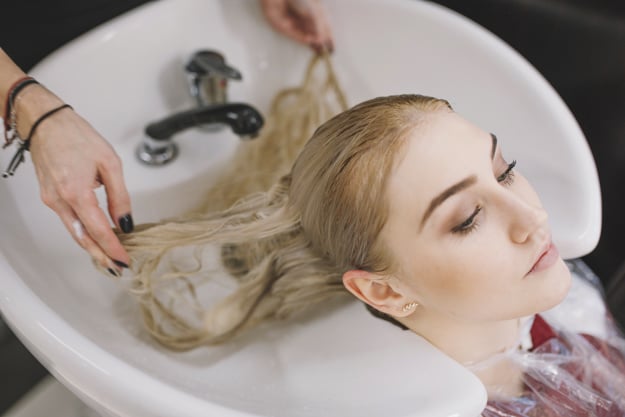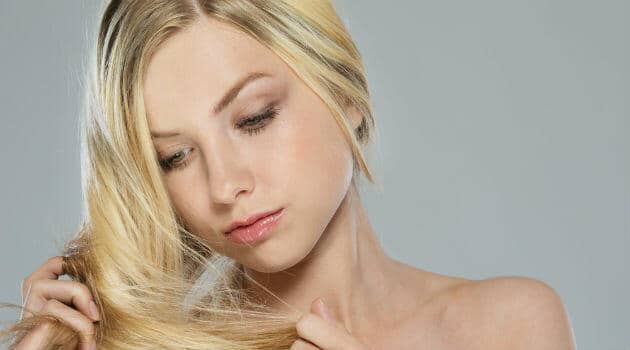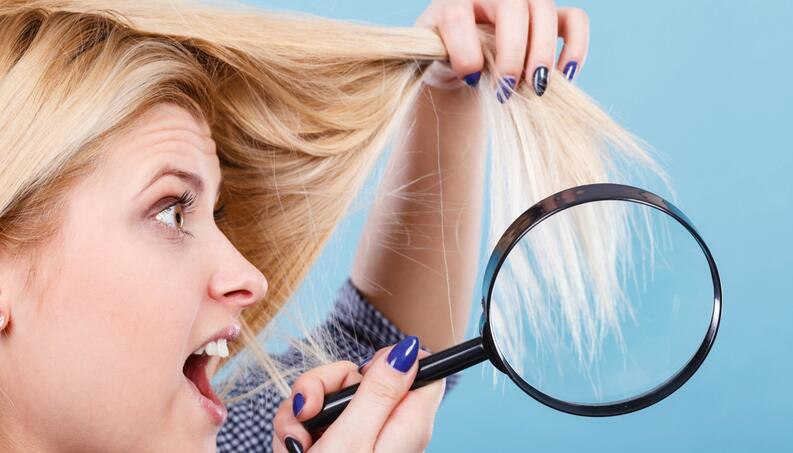You want to lighten your hair, but you’re afraid of the damage this procedure can do to your hair? Then you’ll love meeting shampoozada.
This method, which has become fashionable among fashionistas, helps to lighten the highlights gradually and without drying out or breaking the hair, since it is performed using a recipe that involves shampoo and therefore the name of the procedure.
You got interested and you want to know more? Then keep reading this post and know what it is, how to do it, as well as tips and photos to make it right in your transformation.
Ready? So check all about shampoozada!

Shampoozada
Those who dye their hair regularly know that excessive pigmentation at times can damage the hair and even interfere with the final coloring result.
This is because the hair dye opens up the hair fibers in order to promote the change in color.
But all this chemical process, besides altering the color, in some situations can also expose the threads, resulting in serious damage, such as stains in tone, weakening, falling and double ends.
And those who have dyed their hair for a long time know that sometimes changing the color or just correcting it can be a hard process, which involves patience and a lot of care, avoiding further damage to the already weakened hair.
Thus, the shampoozada method can be a great option.
After all, it performs a gentle discoloration, which helps to uniform the hair tone, from a gradual whitening that can reach up to 2 tones.

When is the shampoozada indicated?
The shampoozada is highly suitable for light or platinum hair that has turned green in contact with chlorine or also for those who look for more illuminated or uniform tones and have difficulty to achieve the result due to the pigmentation already existing in the threads.
The application made on red hair also works well and can open the tone a lot, facilitating the transition to other colors.
However, it is important to remember that the threads will not be extremely light, usually the result is between dark blonde or orange and copper tones.
In black and natural hair, the procedure may lighten, but not to the same intensity as other dyes.
In dark hairs, after the method it is common for the hair to get the shade pulled to red or a little more coppery.
And in the dark brown strands you can notice a light whitening, but also without great modifications, so if you really want to light up to blonde tones, look for other alternatives, such as lights or wicks.
However, it is important to stress that shampoozada is a safe and ideal method for color uniformity.
But for the expected effects to occur, it is worth the recommendation to pay attention, following the process and stages of whitening, respecting the stipulated quantities and also the recommended methods.
Want to know more? Then keep reading and learn how to do it!

Shampoozada: How to do it?
Making the shampoozada is very simple, just separate the following ingredients and materials:
- Bleaching powder;
- Oxygenated water (10 volumes for platinum or fragile hair and 20 volumes for the others);
- Common or neutral shampoo;
- Liquid Bepantol (solution);
- 1 container to make the mixture; and
- meter that marks about 1 tablespoon.
To make the recipe, follow the procedure below:
- Use the meter to start the recipe and add the ingredients to the container;
- In the container, place 1 measure of discoloring powder;
- Then add two measures of hydrogen peroxide, with the volume following the need of your threads and mix well, causing all powder to dissolve;
- Then add two more measures of traditional or neutral shampoo;
- And also put a measure of liquid Benpantol; and
- Finally, mix well until the bleaching powder is fully absorbed into the mixture.
To apply it is important that the wires are previously cleaned and still wet.
Apply the mixture to the threads, massage with circular movements and let it act for 15 to 40 minutes.
At this stage of the application and period of action it is very important to pay attention and check how much the shade is opening, making you get the desired color and also, avoid damage during the process.
After the stipulated time, rinse with abundant water in order to remove any residue.
And another important point is that in this recipe Bepantol is only optional, but a great ingredient that stimulates the protection and retention of water in the threads, avoiding malnutrition and other damages.
If possible, don’t stop using it, as it will certainly make a difference.

Attention to the measures and action time of the products
An important reminder is that using more bleaching powder or letting the mixture act on the strands above the specified time will not cause your hair to lighten more or less.
Using the amount of bleach above recommended or leaving for more than 40 minutes may result in weakening and breakage as these are corrosive products that will also act on the inner layers of the hair.
Therefore, avoid wrong amounts or periods.
After all, the main difference of this method to the usual whitening is the use of the shampoo, which with its moisturizing and softening ingredients, tends to delay corrosion, creating an extra protection in the threads.
But, this does not exempt the hair from possible damage in case of a wrong procedure, so watch out!
What’s the interval between one shampoozada and another?
Shampoozada is a process of discoloration that is less harmful to the hairs, but as already mentioned, this does not mean that it has no effect on hair fibers.
Therefore, in order to keep your hair healthy, avoid repeating the procedure at intervals of less than 15 days.
If your wires have not whitened sufficiently or as you wish, it is possible to repeat the process, but as long as it occurs at least every 2 weeks.
Doing the procedure in less time can lead to severe and even irreversible damage with the need for cuts. So, beware in applications!

Care before and after shampoozada
Before deciding to make the shampoozada it is important to identify the health condition of your hair.
This is because if the wires are damaged in any way, the procedure may not be satisfactory, resulting in adverse effects such as opacity and weakening.
Thus, before starting with the shampoozada, program yourself in advance and start with a routine of hair treatments that aims to strengthen and prepare the hair, allowing better absorption and performance of the lightening components.
Try to start this process at least 15 days before the application of bleach, repeating it once or twice a week.
By taking this care, your threads will remain healthy more easily, even after whitening.
And after the shampoozada, as the strands have gone through a chemical process it is very important that it is cared for and nourished, avoiding dryness and weakening.
That said, after performing the method, make a hair hydration with compatible moisturizing masks for your hair type or suitable for post dye damage.
And in the same week, interchange hydration care with nutrition, which also promotes faster recovery of hair cuticles, avoiding loss of water and lipids.
By following this recommendation for at least 15 days, your hair will be stronger at the end and ready to receive the next dye.
And to help you a little bit more, we’ll bring you a moisturizing recipe for discolored hair, easy to make and with ingredients you may already have at home. Check it out!

Recipe for bleached hair hydration – post shampoozada
To make this hydration you will need the following ingredients:
- 1 teaspoon of olive oil (preferably extra virgin);
- 1 teaspoon honey;
- the same amount of coconut oil;
- the same amount of slime gel;
- 2 tablespoons of moisture mask (preferably for dyed or damaged hair); and
- 1 container and spoon for the mixture.
And once you have separated all the items, you can start with the treatment by proceeding as follows:
- In a container, put the oil, the coconut oil and the gel of the babosa and mix;
- Then put on the honey and hydration mask and mix for a few more minutes until well incorporated;
- After making the recipe, apply on previously cleaned and still wet hair lock by lock, all the way to the ends;
- When ironing all over your hair, make a kind of coke and put on a thermal cap or aluminium for at least 20 minutes;
- Over time, remove the mixture from the threads with plenty of warm water and finish with cold water in order to seal the cuticles of the threads.
By performing this process after shampoozada, your hair will certainly remain strong and healthy.
Is it possible to platinate hair with shampoos?
No, even with the bleaching powder and hydrogen peroxide, the non-platinum shampoos or hair shadesbut it clears up and unifies the tone.
Thus, if what you are looking for is a result pulled to the gray or platinum tones, even if your hair is clear, avoid the shampoozada and look for a professional who will do the procedure on your hair.
This care and attention will contribute to the beauty of the hair, with strength and vitality.

Does Shampoozada have any contraindications?
According to information from professionals in the field, the procedure is not welcome in children under 14, pregnant and breastfeeding.
This is because the bleach and hydrogen peroxide contain ammonia in its composition, which can be harmful to health at certain stages.
The same can happen in cases of people extremely sensitive to chemicals, when in contact with the scalp.
Thus, when applying the recipe, avoid rubbing on the skin, neck and leather region, and also suspend the use when feeling any discomfort or itching in the area.
In case of doubt, look for a professional
If after reading the whole article, you know the recipes and methods of application, do not feel safe to do the procedure alone, our suggestion is always to look for a skilled professional who can carry out the transformation with all possible safety.
After all, damaged hair can cause great upsets.
So, reflect on the result you want to achieve, the ability you have for the achievement and only then achieve the whitening with the shampoozada.
And to inspire you a bit more, we’ll bring you some photos of before and after hair that went through the shampoozada process. Check it out!
Shampoozada Before and After – Photos
And after all these tips and information, did you manage to decide whether or not to make the shampoozada?
Leave your comment and tell us, we’ll love to hear it!


